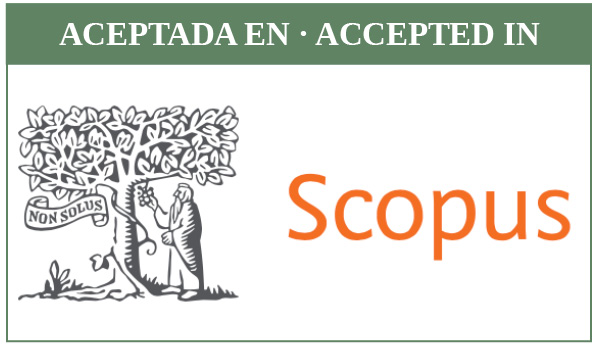Between the Maghrib and the western Sahel: mobility and inhabitation dynamics of Berber human groups in Saharan spaces through Arabic sources (3rd/9th to 8th/14th centuries)
DOI:
https://doi.org/10.30827/meaharabe.v74.30997Keywords:
Medieval Sahara, Berbers, mobility, inhabitation, productive systemsAbstract
This study analyzes the most relevant textual evidence from the Arabic medieval geographical corpus, together with other kinds of testimonies, such as travel and ʿajāʾib literature or historiographical accounts, in search for the mobility, presence and settlement dynamics of Berber human groups between the Maghrib and the western Sahel between the 3rd/9th and 8th/14th centuries. Through the works of Ibn Ḥawqal, al-Bakrī, al-Idrīsī, Ibn Baṭṭūṭa and Ibn Ḫaldūn, and the systematization of the terminology that they apply to the different kinds of groups (qawm, ahl, qabīla, entre otros términos), mostly Ṣanhāja but also Zanāta and Hawwāra, this study will show the spaces that they occupy and the productive activities that allow this, from commerce and herding to Islamic studies or government. The mobility dynamics of Berber groups in the Saharan space for the greatest part of the medieval period will also be brought up, together with the continuities and transformations in settlement patterns and their relationship to production systems.
Downloads
References
AILLET, Cyrille. “De l’archipel berbère au Grand jeu saharien”. Revue des Mondes Musulmans et de la Méditerranée, 149 (2021), pp. 169-194. https://journals.openedition.org/remmm/15910#quotation.
AL-BAKRĪ, Abū ‘Ubayd ‘Abd Allāh b. ‘Abd al-‘Azīz b. Muḥ. b. Ayyūb. Kitāb al-masālik wa-l-mamālik. Ed. Adrien P. VAN LEEUWEN y André FERRÉ. Cartago: al-Dār al-‘Arabiyya li-l-Kitāb y al-Mu’assasa al-Waṭaniyya li-lTarŷama wa-l-Taḥqīq wa-l-Dirāsāt “Bayt al-Ḥikma”, 1991.
BALLESTÍN, Xavier. “Tribus, genealogía, poder y kutub al-masālik: las tribus puras y sin mezcla de los Ṣinhāŷa en la obra de Ibn Ḥawqal”. En Helena DE FELIPE y Miguel Ángel MANZANO (eds.). Magna. Una geografía cultural y humana del Mágreb. Granada: Comares, 2021, pp. 74-83.
BENCHEKROUN, Chakib. “Requiem pour Ibn Hawqal. Sur l'hypothèse de l'espion fatimide”. Journal Asiatique, 304, 2 (2016), pp. 193-211.
BRAMÓN, Dolors. El mundo en el s. XII. El tratado de al-Zuhrī. Barcelona: Orientalia Barcinonensia, 1991.
BRETT, Michael. “Islam and Trade in the Bilād al-Sūdān, Tenth-Eleventh Century A. D.”. The Journal of African History, 24, 4 (1983), pp. 431-440. https://doi.org/10.1017/S0021853700027985.
BROWN, Jonathan A.C. Islam and Blackness. Londres: Oneworld Academic, 2022.
CAMPS, Gabriel. “Gudâla/Guezula”. En Encyclopédie berbère, 21 (1999), doc. G76. https://doi.org/10.4000/encyclopedieberbere.1788.
CANÓS-DONNAY, Sirio. “The Empire of Mali”. En Oxford Research Encyclopedia of African History. https://oxfordre.com/africanhistory/view/10.1093/acrefore/9780190277734.001.0001/acrefore-9780190277734-e-266.
CHAKER, Salem. “Lemtouna, Lamtûna, Lemta, Lamta/Ilemteyen”. En Encyclopédie berbère, 28-29 (2008), doc. L13. https://doi.org/10.4000/encyclopedieberbere.324.
CLAUDOT-HAWAD, Helène. “Matriarcat (berbère)”. En Encyclopédie Berbère, 31 (2010), doc. M67a. https://doi.org/10.4000/encyclopedieberbere.514.
COLLET, Hadrien. “Deviser les merveilles du monde. Le voyage au Soudan dans la Tuḥfat al-nuẓẓār d’Ibn Baṭṭūṭa et Ibn Ǧuzayy”. Annales Islamologiques, 51 (2017), pp. 85-109. https://doi.org/10.4000/anisl.3355
—. Le sultanat du Mālī. Histoire régréssive d’un empire médiéval XXIe-XIVe siècle. París: CNRS, 2022.
CUOQ, Joseph. Recueil des sources arabes concernant l’Afrique Occidental du VIIIème au XVIème siècles (Bilād al-Sūdān). París: CNRS, 1975.
—. Histoire de l’islamisation de l’Afrique de l’Ouest. Des origines à la fin du XVIème siècle. París: Geuthner, 1984.
DE FELIPE, Helena, y Miguel Ángel MANZANO-RODRÍGUEZ. “Un territorio al oeste: el espacio y sus habitantes”. En Helena DE FELIPE y Miguel Ángel MANZANO (eds.). Magna. Una geografía cultural y humana del Mágreb. Granada: Comares, 2021, pp. IX-XIX.
DE LA VERONNE, Chantal. “Ṣanhādja”. En Bernard LEWIS; Charles PELLAT y Joseph SCHACHT (eds.). Encyclopédie de l’islam. Nouvelle Édition. Leiden-París: E.J. Brill-Maisonneuve et Larose, vol. 9, p. 18. (En adelante, EI2).
DUCÈNE, Jean-Charles. “Conceptualisation des espaces sahéliens chez les auteurs arabes du Moyen Âge”. Afriques, 04 (2013), https://doi.org/10.4000/afriques.1114.
FAUVELLE-AYMAR, François-Xavier. “The Imperial Capital of Mâli (14th Century). A New Hypothesis”. Medievalista, 35 (2024). https://doi.org/10.4000/medievalista.7706.
FERRÉ, André. “Les sources du Kitāb al-masālik wa-l-mamālik d’Abū ‘Ubayd al-Bakrī”. Ibla. Révue de l’Institut des Belles Lettres Árabes, 49, 158 (1986), pp. 185-214.
FRANCO-SÁNCHEZ, Francisco. “Las costas del Magreb frente a las de alAndalus en el Kitāb al-masālik wa-l-mamālik de al-Bakrī. Textos árabes y traducción”. En Elena de Jesús DE FELIPE RODRÍGUEZ y Miguel Ángel MANZANO RODRÍGUEZ (eds.). Magna. Una geografía cultural y humana del Magreb. Granada: Comares, 2021, pp. 35-53.
FROMHERZ, Allen. Ibn Khaldūn. Life and Times. Edimburgo: Edinburgh University Press, 2011.
GARCÍA SANJUAN, Alejandro. “El polígrafo onubense Abū ‘Ubayd al-Bakrī”. Aestuaria: Revista de Investigación, 8 (2002), pp. 13-34.
GAST, Marceau. “Anbiya”. En Encyclopédie berbère, 5 (1988), doc. A213. https://doi.org/10.4000/encyclopedieberbere.2497.
—. “Huwwâra, Houuara, Houara, Hawwâra”. En Encyclopédie berbère, 23 (2000), doc. H61. https://doi.org/10.4000/encyclopedieberbere.1612.
—. “Iseqqemâren”. En Encyclopédie berbère, 25 (2003), doc. I71a. https://doi.org/10.4000/encyclopedieberbere.1446.
GESTRICH, Nikolas. “The Empire of Ghana”. En Oxford Research Encyclopedia of African History. https://oxfordre.com/africanhistory/view/10.1093/acrefore/9780190277734.001.0001/acrefore-9780190277734-e-396.
GOMEZ, Michael. African Dominion. A new History of Empire in Early and Medieval West Africa. Princeton-Oxford: Princeton University Press, 2018.
GORDON, Matthew et al. The Works of Ibn Wāḍiḥ al-Ya‘qūbī. An English Translation. Leiden-Boston: E. J. Brill, 2018.
HADJ-SADOK, Mohammed. “Ibn Khurradadhbih”. EI2, vol. III, p. 839.
HALL, Bruce. A History of Race in Muslim West Africa, 1600–1960. Cambridge: Cambridge University Press, 2011.
HAMANI, Djibo. L’Islam au Soudan Central. Histoire de l’islam au Niger du VIIème au XIXème siècle. París: L’Harmattan, 2007.
HAMÈS, Constant. “Zanāta”. EI2, vol. 11, pp. 442-443.
HUNWICK, John O.; MEILLASSOUX, Claude y TRIAUD, Jean-Louis. La géographie du Soudan d’après al-Bakri. Trois lectures. En 2000 ans d’histoire africaine. Le sol, la parole et l’écrit. Mélanges en hommage à Raymond Mauny. París: Société Française d'Histoire d'Outre-Mer, 1981, vol. 1, pp. 401-428.
—. “A Region of the Mind: Medieval Arab Views of African Geography and Ethnography and their Legacy”. Sudanic Africa, 16 (2005), pp. 103-136.
AL-IDRĪSĪ, Abū ‘Abd Allāh Muḥammad b. Muḥammad b. ‘Abd Allāh b. Idrīs al-Šarīf. Nuzhat al-muštāq fī l-tirāq al-āfāq. Ed. Fuat SEZGIN. Fráncfort del Meno: Institute for the History of Arabic-Islamic Science, Universität Johann Wolfgang von Goethe, 1992.
IBN BAṬṬŪṬA, Abū ‘Abd Allāh Muḥammad al-Lawātī al-Ṭanŷī. Tuḥfat alnuẓẓār fī garā’ib al-amṣār wa-‘aŷā’ib al-asfār. Ed. Charles DEFRÉMERY y Benjamin SANGUINETTI. París: Anthropos, 1968.
IBN ḤAWQAL, Abū l-Qāsim b. ‘Alī l-Naṣībī. Kitāb ṣūrat al-arḍ. Ed. Johannes Hendrik KRAMERS. Leiden: E. J. Brill, 1939.
INSOLL, Timothy. “The External Creation of the Western Sahel’s Past: the Use and Abuse of the Arabic Sources”. Archaeological Review from Cambridge, 13-1 (1994), pp. 39-49.
—. “West Africa”. En Bethany J. WALKER; Timothy INSOLL y Corisande FENWICK (eds.). The Oxford Handbook of Islamic Archaeology. Oxford: Oxford University Press, 2020, pp. 449-479. https://doi.org/10.1093/oxfordhb/9780199987870.013.18.
KHELIFA, Abderrahmane. “Masufa (Massoufa)”. En Encyclopédie berbère, 30 (2010), doc. M62. https://doi.org/10.4000/encyclopedieberbere.507.
—. “Masmuda”. En Encyclopédie berbère, 30 (2010), doc. M51. https://doi.org/10.4000/encyclopedieberbere.488.
—. “Miknaça / Miknasa (*Imeknasen)”. En Encyclopédie berbère, 32 (2010), doc. M115. https://doi.org/10.4000/encyclopedieberbere.603.
LEVTZION, Nehemia. “Ibn-Ḥawqal, The Cheque, and Awdaghost”. The Journal of African History, 9, 2 (1968), pp. 223-233. https://doi.org/10.1017/S0021853700008847.
— y HOPKINS, J. F, P. Corpus of Early Arabic Sources for West African History. Princeton: Markus Wiener Publishers, 2000.
LEWICKI, Tadeusz. “Quelques extraits inédits relatifs aux voyages des commerçant et des missionaires ibādites nord-africains au pays du Soudan occidental et central au Moyen Age”. Folia Orientalia, 2 (1960-1961), pp. 1-27.
—. “L’État nord-africain de Tâhert et ses relations avec le Soudan occidental à la fin du VIIIe et au IXe siècle”. Cahiers d’Études Africaines, 8, 2 (1962), pp. 513-535.
—. “Les origines et l’islamisation de la ville de Tâdmakka d’après les sources arabes”. Revue Française d’Histoire d’Outre-Mer, 46 (1979), pp. 163-168.
—. “Les sources ibāḍites de l’histoire médiévale de l’Afrique du Nord”. Africana Bulletin, 35 (1988), pp. 31-42.
—. “Misrāta”. EI2, vol. 7, pp. 186-187.
LYDON, Ghislaine. On Trans-Saharan Trails: Islamic Law, Trade Networks, and Cross-Cultural Exchange in Nineteenth-Century Western Africa. Cambridge: Cambridge University Press, 2009.
MANZANO-RODRÍGUEZ, Miguel Ángel. “El Magreb desde Oriente: un acercamiento al Libro de los países de Aḥmad al-Ya‘qūbī”. En Fátima ROLDÁN y Alejandra CONTRERAS (eds.). Paisajes, Espacios y Objetos de Devoción en el Islam. Sevilla: Editorial Universidad de Sevilla, pp. 141-160.
—. “El Mágreb en el Mu‘ǧam al-buldān de Yāqūt al-Rūmī (m. 626/1229): Análisis del contenido y fuentes”. Al-Qanṭara, 43, 2 (2022), e17. https://doi.org/10.3989/alqantara.2022.017.
MASONEN, Pekka, y FISHER, Humphrey J. “Not Quite Venus from the Waves: The Almoravid Conquest of Ghana in the Modern Historiography of Western Africa”. History in Africa, 23 (1996), pp. 197-232. https://doi.org/10.2307/3171941.
MCDOUGALL, E. Ann. “The View from Awdaghust: War, Trade and Social Change in the Southwestern Sahara, from the Eighth to the Fifteenth Century.” The Journal of African History, 26, 1 (1985), pp. 1-31. http://www.jstor.org/stable/181836.
MONTEIL, Vincent. “Al-Bakrī (Cordue, 1068). Routier de l’Afrique blanche et noire du Nord-Ouest”. Bulletin de l’Institut Fondamental d’Afrique Noire, 30, 1, série B (1968), pp. 39-116.
NOGBOU, Éric M. “Écrits des géographes arabes, source pour la connaissance du Bilâd al-Sûdan (VIIIe-XIIe siècles)”. En Nathalie KOUAME, Éric P. MEYER y Anna VIGUIER (eds.). Encyclopédie des historiographies: Afriques, Amériques, Asies. París: Presses de l’Inalco, 2020, https://doi.org/10.4000/books.pressesinalco.24352.
NORRIS, Harry Thirlwall. The Tuaregs: their Islamic Legacy and its Diffusion in the Sahel. Warminster: Aris & Phillips, 1975.
PELLAT, Charles. “Al-Muhallabī”. EI2, vol. VII, p. 360.
PREVOST, Virginie. L’aventure ibāḍite dans le Sud tunisien. Helsinki: Academia Scientiarum Fennica, 2008.
ROSENTHAL, Franz. “Ibn ‘Abd al-Ḥakam”. EI2, vol. III, pp. 674-675.
SANJUÁN PÉREZ, Alba. “La huella de ‘Abd al-Raḥmān b. Ḥabīb: agua y territorio en la ruta hacia Awdagost”. En Helena DE FELIPE y Miguel Ángel MANZANO (eds.). Magna. Una geografía cultural y humana del Mágreb. Granada: Comares, 2021, pp. 223-236.
SEZGIN, Fuat. Studies on Ibn Hawqal and al-Istahri: collected and reprinted. Fráncfort del Meno: Institute for the History of Arabic-Islamic Science, 1992.
TAESCHNER, Franz. “Djughrāfiyā”. EI2, vol. II, pp. 590-605.
VAN LEEUWEN, Adrien P. y FERRÉ, André. “Introduction”. En AL-BAKRĪ, Abū ‘Ubayd ‘Abd Allāh b. ‘Abd al-‘Azīz b. Muḥ. b. Ayyūb. Kitāb al-masālik wa-l-mamālik. Ed. Adrien P. VAN LEEUWEN y André FERRÉ. Cartago: alDār al-‘Arabiyya li-l-Kitāb y al-Mu’assasa al-Waṭaniyya li-l-Tarŷama wa-lTaḥqīq wa-l-Dirāsāt “Bayt al-Ḥikma”, 1991, vol. I. VVAA “Sadrāta”. EI2, vol. 8, p. 756.
VIGUERA MOLÍNS, Mª Jesús. “Ibn Sa‘īd al-Magribī”. En Real Academia de la Historia. Diccionario Biográfico electrónico. http://dbe.rah.es/.
WEBB, James L. A. Desert Frontier: Ecological and Economic Change along the Western Sahel, 1600-1850. Madison: University of Wisconsin Press, 1995.
Downloads
Published
How to Cite
Issue
Section
License
Copyright (c) 2025 Miscelánea de Estudios Árabes y Hebraicos. Sección Árabe-Islam

This work is licensed under a Creative Commons Attribution 4.0 International License.
The authors publishing their work in this journal agree to the following terms and conditions:
1. The authors retain the copyright and give the journal the right to be the first publication of the work and also to be licensee under a Creative Commons Attribution License which allows others to share the work, provided the author of the work and the initial publication in this journal are acknowledged.
2. Authors may make additional agreements separately for the non-exclusive distribution of the version of the work published in the journal (for example, putting it in an institutional repository or publishing it in a book), with acknowledgement of its initial publication in this journal.
3. Authors are allowed and encouraged to electronically disseminate (for example, in institutional repositories or on their own web page) the published version of their works (publisher's post-print version) or, if not possible, the author's reviewed and accepted post-print version. This is to facilitate productive exchanges, and allow for earlier and greater citation by third parties of the published works (See The Effect of Open Access).
4. The journal accepts no responsibility for the opinions expressed by the authors.



















